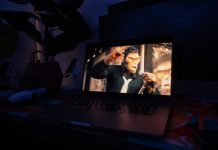Luckily, hearts, flowers, and chocolates have not completely choked the month of February: the fact that it is Black History month give it a breath of fresh air. It pops those googley eyes back into their sockets so their owners can look at the real world, rather than their own little world (whoever they may be).
The Multicultural Center screened the film “Little Rock Central High: 50 Years Later,” on Wednesday, Feb. 18. The film, which celebrates the fiftieth anniversary of the integration of blacks and whites in public schools, juxtaposes black and white original footage with the present, colored documentation by the film’s creators, Craig and Brent Renaud. But even when the audience can see the green or red shirts of the current students at Little Rock Central High School, the black and white dichotomy still exists.
The film, and the three speakers present at the discussion following the viewing, emphasized that although we have gone a long way, we still have much work to do.Â
The documentary, produced with the acknowledgement of the significant 50-year landmark, serves to remind as well as celebrate. At the historic Little Rock Central High School in Arkansas, African American students walk through the halls without any national guards to escort them. They stand next to white students as they open their lockers. In fact, according to the documentary, the black students make up the majority. Integration has gone a long way, but from the very opening of the film, the audience is slapped in the face with the stark reality.
“It’s not supposed to be like this…it doesn’t make sense, says a woman attempting to stifle her tears as she walks around the school she attended with eight other black students. She was one of the nine students who had the courage to go to an all-white school once the ban on segregated education was established. From the outside, looking at the fade, there seems to be no reason for her to be weeping. Perhaps she sheds tears because she does not know how to deal with the emotions evoked by coming back and remembering her experience. Perhaps she, like the viewers, is shocked by what the school looks like inside.
Seeing only three black students in an Advanced Placement (AP) class surrounded by white classmates, or seeing every seat filled with a black student in the class associated with “problematic students”, is a familiar sight; the film makes the familiar shocking. Those being interviewed, students, teachers, parents, are aware of the segregation, calling the AP program an “imaginary line.” The film reminds the audience that although there might not be a visible, tangible, government-enforced line separating people by color, there is still an academic gap that perpetuates it. We have moved from having two separate schools to having “two schools in one” as some of the teachers and faculty mention in the documentary.
Despite the numerous technical difficulties that removed all of the sound from the film viewing, the work was still moving. Seats were quickly filled with a multiracial, and even multigenerational audience. The discussion afterward suggested that everyone was moved. Seeing and hearing discrepancy after discrepancy can be discouraging by the end of the film, but the following discussion gave the audience a hint of hope.
The film was a reminder of progress achieved as well as steps to be made in the future. A discussion was held with two alumni from Little Rock Central High School who had to be escorted to school, along with another influential individual who sat onstage and reminded everyone that despite the long road ahead, it is nonetheless possible. They were reminders of the progress; the young elementary children sitting in the front row were reminders of the hope for something better.
To watch the film without staying, participating or listening to the discussion afterward would be only half the experience one could embrace. The discussion included everyone in its discourse, allowing no one to have their voice silenced. The audience asked questions to the three individuals sitting at the red covered table; the panelists questioned the audience back. Audience members even conversed with each other, answering questions posed to the guests.
Hearing a young child ask such a big question that involves all students was truly remarkable. His little voice embodied the very same question that resonated throughout the documentary: “We aren’t teachers, we aren’t presidents, but what can we as students do to break the barrier between the privileged and the unprivileged?” he asked.
What can we do? Will we do it? Who are the students of this generation who will face the angry crowds who hurl insults because they are willing to do what is right and make a difference? “We’ve gone so far, but we still have a long way to go,” various speakers in the film iterated. That young child reminded everyone present that it is this generation’s turn to answer the question he posed; it is this generation that has to make that trek along the “long way to go.”











